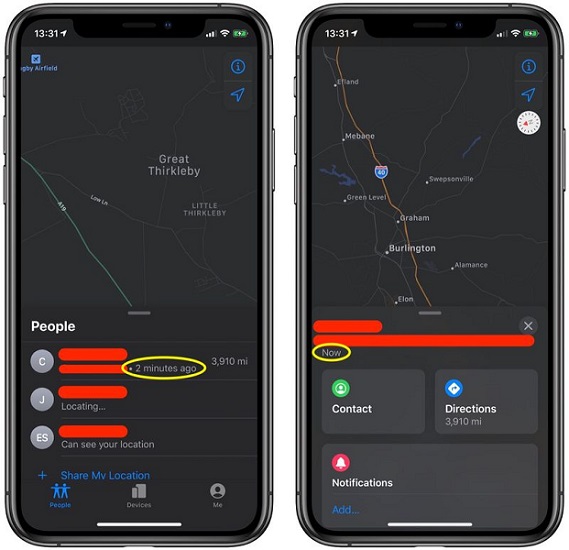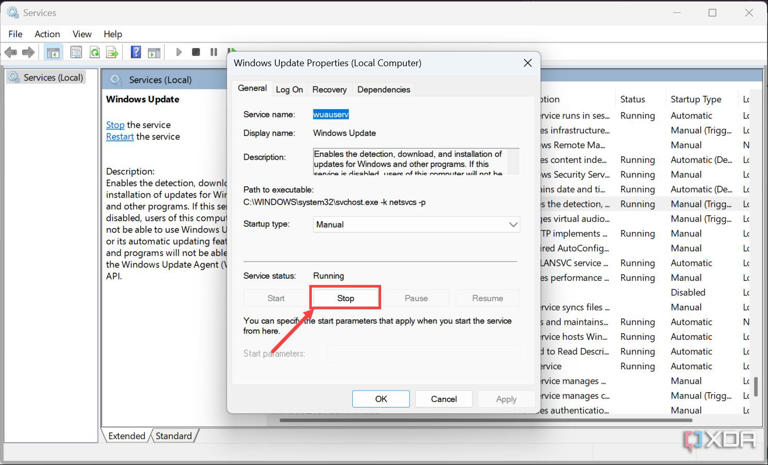Troubleshooting Location Update Issues

In today's digital age, our devices have become an integral part of our lives, and the ability to accurately track and update our locations is a crucial feature. Whether it's for navigation, fitness tracking, or simply staying connected, a reliable location update is essential. However, users often encounter various issues and errors that hinder this functionality. This comprehensive guide aims to delve into the world of location update troubleshooting, offering expert insights and practical solutions to ensure a seamless experience.
Understanding Location Update Errors

Location update issues can manifest in various forms, causing frustration and inconvenience for users. From inaccurate readings to complete failures, these problems can be attributed to a multitude of factors. Let’s explore some common scenarios and the underlying causes behind them.
Inaccurate Location Data
One of the most prevalent issues is receiving incorrect or imprecise location information. This can occur due to several reasons, including:
- Signal Interference: Physical obstacles like tall buildings, dense forests, or even the position of your device can disrupt the signal and lead to inaccurate readings.
- GPS Limitations: While GPS technology has advanced significantly, it still has its limitations. Factors such as satellite availability, atmospheric conditions, and signal reflections can impact accuracy.
- Device Settings: Incorrect device settings, such as disabling location services or granting restricted permissions, can hinder accurate location tracking.
Failed Location Updates
In some cases, users may encounter complete failures in location updates. This can result from:
- Network Connectivity: Poor or unstable network connections can prevent your device from communicating with location servers, resulting in failed updates.
- Software Glitches: Outdated or buggy software can cause compatibility issues, leading to location update failures. This is often observed when transitioning between different operating system versions.
- Hardware Malfunctions: In rare instances, hardware malfunctions or damage to the GPS module can render location tracking impossible.
Excessive Battery Drain
Continuous location tracking, especially when multiple apps are running in the background, can significantly impact battery life. Users often notice rapid battery drainage, which can be attributed to:
- Background Activities: Apps running in the background, especially those with frequent location updates, can consume substantial power.
- Poor Device Optimization: Inefficient power management or outdated device software can exacerbate battery drainage issues.
- Infrequent Charging: Users who rely heavily on location services may need to adjust their charging habits to ensure their devices have sufficient power throughout the day.
Troubleshooting Techniques

Now that we have identified some common location update issues, let’s explore effective troubleshooting techniques to resolve them.
Optimizing Location Settings
Ensuring your device’s location settings are correctly configured is a crucial step. Here are some tips to optimize your settings:
- Grant Necessary Permissions: Make sure that the apps requiring location access have the necessary permissions. Review and adjust these settings in your device’s privacy settings.
- Choose Location Accuracy: Most devices offer multiple location accuracy options, such as high accuracy, battery-saving, or device-only. Choose the option that best suits your needs and preferences.
- Manage Location History: Regularly review and manage your location history. Some devices allow you to delete or manage past location data, which can help improve privacy and performance.
Improving Signal Reception
To enhance location accuracy, improving signal reception is essential. Consider the following strategies:
- Clear Obstructions: Physical barriers can interfere with signal reception. Try moving to an open area or adjusting your device’s position to improve signal strength.
- Use External Antennas: If you frequently encounter signal issues, investing in an external GPS antenna can boost signal reception and improve accuracy.
- Check for Software Updates: Software updates often include improvements to location services. Ensure your device and apps are up-to-date to benefit from the latest enhancements.
Managing Battery Consumption
Location tracking can be a significant battery drain. Here are some tips to optimize battery life:
- Adjust Location Update Frequency: Certain apps allow you to control the frequency of location updates. Reducing the update interval can help conserve battery power.
- Use Power-Saving Modes: Most devices offer power-saving modes that can restrict background activities and reduce battery consumption. Enable these modes when needed.
- Optimize Charging Habits: Charge your device regularly, especially if you rely heavily on location services. Consider using power-saving chargers or battery packs to ensure your device has sufficient power throughout the day.
Software Troubleshooting
Software glitches and compatibility issues can cause location update failures. Here are some steps to troubleshoot software-related problems:
- Update Apps and OS: Ensure all your apps and the operating system are up-to-date. Software updates often include bug fixes and performance improvements.
- Clear App Data: If an app consistently fails to update location, try clearing its data and cache. This can resolve minor glitches and improve performance.
- Reinstall Apps: In extreme cases, reinstalling apps can help resolve compatibility issues. Make sure to back up your data before proceeding.
Advanced Troubleshooting for Persistent Issues
If basic troubleshooting steps do not resolve your location update issues, it may be time to explore more advanced techniques. Here are some expert tips to tackle persistent problems:
Resetting Location Services
Sometimes, a complete reset of location services can resolve underlying issues. Follow these steps to reset location services:
- Go to your device’s settings and locate the “Location” or “Privacy” section.
- Disable all location services and wait for a few minutes.
- Enable location services again and grant necessary permissions to the apps.
- Test the location update functionality to see if the issue is resolved.
Checking Hardware Integrity
If you suspect a hardware malfunction, it’s essential to have your device inspected by a professional. Here are some signs that may indicate a hardware issue:
- Persistent Location Failures: If location updates consistently fail, regardless of software changes, a hardware issue is likely.
- Physical Damage: Visible damage to the device, especially around the GPS antenna, can impact location tracking.
- Multiple Device Failures: If multiple devices in the same vicinity experience location update issues, a hardware problem is a strong possibility.
Seeking Professional Assistance
If all troubleshooting efforts fail, it may be time to seek professional help. Reach out to your device manufacturer or a trusted repair service to diagnose and resolve complex issues. They can provide specialized tools and expertise to address hardware or software problems.
Future Implications and Innovations
As technology continues to advance, we can expect significant improvements in location update accuracy and reliability. Here are some future implications and innovations to look forward to:
Enhanced GPS Technology
GPS technology is constantly evolving, with improvements in satellite accuracy and signal processing. These advancements will lead to more precise location tracking, even in challenging environments.
Advanced Location Services
The integration of location services with other technologies, such as AI and machine learning, will revolutionize the way we interact with our devices. Expect more context-aware and personalized location-based experiences in the future.
Energy-Efficient Tracking
Researchers and developers are working on energy-efficient tracking solutions. Expect to see devices with improved battery life and more efficient location tracking capabilities, ensuring a seamless experience without excessive power consumption.
Privacy-Focused Innovations
With growing concerns about privacy, future location services will likely prioritize user data protection. Expect more transparent and customizable privacy settings, giving users greater control over their location data.
Conclusion

Troubleshooting location update issues requires a systematic approach and a deep understanding of the underlying technologies. By following the expert tips and techniques outlined in this guide, you can ensure a more accurate and reliable location tracking experience. Remember, continuous advancements in technology will shape the future of location services, offering even more precise and innovative solutions.
How often should I update my device’s location settings?
+It’s a good practice to review and update your location settings whenever you install new apps or notice any issues with location accuracy. Regularly checking for software updates can also help ensure optimal performance.
Can I use a VPN to improve location accuracy?
+Using a VPN can sometimes impact location accuracy, as it may route your device’s traffic through servers in different regions. It’s recommended to disable VPNs when relying on precise location data.
What if my device’s GPS module is damaged?
+If you suspect hardware damage, it’s best to consult a professional repair service. They can diagnose the issue and provide appropriate solutions, ensuring your device’s GPS functionality is restored.
Are there any alternative location tracking methods?
+Yes, alternative methods like Wi-Fi positioning and cellular network triangulation can provide location data. However, these methods may not be as accurate as GPS, especially in rural or remote areas.



